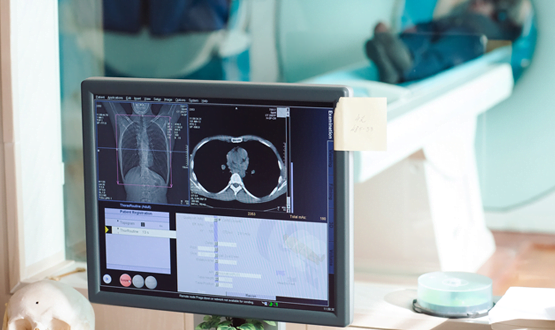In the field of healthcare, the use of technology has revolutionized the way medical professionals handle patient information and diagnostic imaging. One such technological innovation is the Radiology Information System (RIS) computer. This computer system plays a crucial role in managing radiology departments and streamlining the process of storing and retrieving radiological images and patient data. In this blog post, we will explore the various aspects of a RIS computer, its functions, benefits, and its impact on the healthcare industry.
What is a Radiology Information System (RIS) computer?
A RIS computer is a specialized software system designed for radiology departments to manage and track patient data, imaging studies, and related administrative tasks. It serves as a central hub for storing, organizing, and retrieving radiological images and patient information. The RIS computer acts as a communication bridge between radiologists, radiology technologists, and other healthcare professionals involved in patient care.
How does a RIS computer work?
A RIS computer works by integrating with various imaging modalities, such as X-ray machines, CT scanners, MRI machines, and ultrasound devices. It receives and stores imaging studies along with associated patient information in a secure database. The RIS computer also provides tools for scheduling appointments, generating radiology reports, and facilitating communication between different departments within a healthcare facility.
What are the main functions of an RIS computer?
– Patient registration and scheduling: A RIS computer allows for efficient registration of patients, scheduling of appointments, and management of patient demographics and insurance information.
– Image and data management: It facilitates the storage, retrieval, and archiving of radiological images, ensuring easy access for radiologists and other healthcare professionals involved in patient care.
– Workflow management: A RIS computer optimizes the workflow within radiology departments by automating tasks like appointment reminders, result notifications, and report distribution, thereby improving overall efficiency.
– Reporting and documentation: It enables radiologists to generate accurate and comprehensive reports, ensuring proper documentation of findings and recommendations.
– Billing and financial management: A RIS computer assists in managing billing and financial aspects of radiology services, including insurance claims and reimbursement processes.
What are the benefits of using a RIS computer?
– Improved efficiency: By automating various tasks and streamlining workflows, a RIS computer saves time and effort for radiology staff, enabling them to focus more on patient care.
– Enhanced accuracy: The use of a RIS computer reduces the chances of errors in data entry, report generation, and patient management, leading to more accurate and reliable radiological diagnoses.
– Better communication and collaboration: A RIS computer facilitates seamless communication and collaboration between different departments within a healthcare facility, ensuring that patient information and imaging studies are readily available to all relevant healthcare professionals.
– Cost-effectiveness: Implementing a RIS computer can result in cost savings by reducing paperwork, improving resource allocation, and optimizing operational efficiency.
How does an RIS computer impact the healthcare industry?
The introduction of RIS computers has had a significant impact on the healthcare industry. It has revolutionized the way radiology departments operate by digitizing and centralizing patient information and imaging data. This has led to improved patient care, faster diagnosis, enhanced collaboration among healthcare professionals, and more efficient management of resources. Additionally, the use of RIS computers has paved the way for integration with other healthcare systems, such as Electronic Health Records (EHRs), enabling seamless data exchange and interoperability.

Conclusion
The RIS computer is a vital tool in modern healthcare, transforming the way radiology departments manage patient information and imaging studies. Its ability to streamline workflows, improve efficiency, and enhance communication has made it an invaluable asset in the healthcare industry. As technology continues to advance, the RIS computer will likely play an even more significant role in ensuring accurate and timely radiological diagnoses, ultimately benefiting both healthcare professionals and patients alike.















